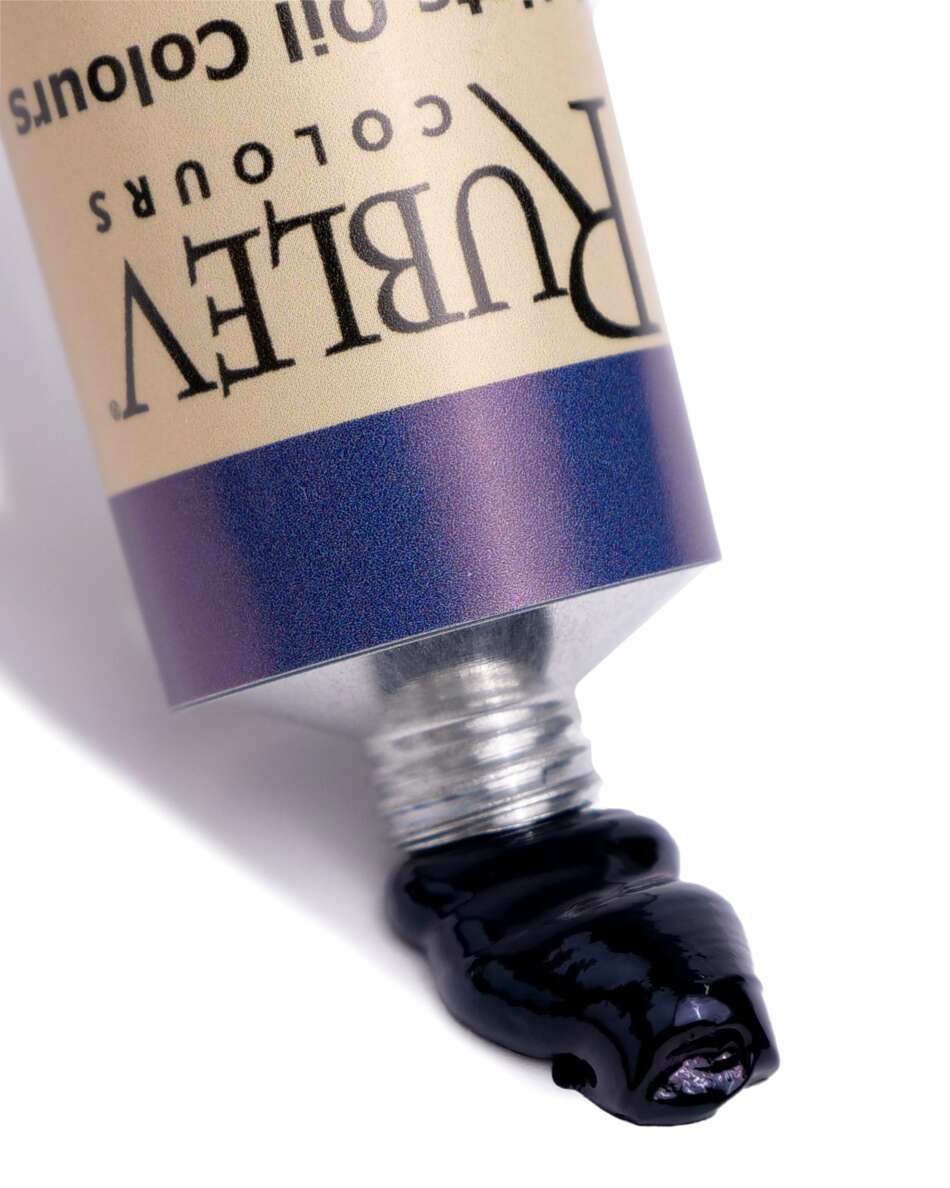Rublev Colours Prussian Blue Oil Paint
A translucent deep black-blue oil color with high tinting strength, fine-grained and a 'short' buttery paint.
Rublev Colours Prussian Blue is ground in linseed oil without using stearates or other additives that affect the behavior of the pigment in oil. The pale linseed oil used to make this color is well-aged and refined to provide higher levels of reactivity and oxidation than raw oil. The consistency is a smooth, thick, rich color that is ‘short’ and buttery.
Often called the first modern or artificial pigment, Prussian blue was introduced in the early nineteenth century. A German color maker or dyer in Berlin named Diesbach accidentally discovered the black-blue of Prussian blue in 1704, thinking that his pigment would be red since it was made from cattle blood. Prussian blue was the earliest of the modern synthetic colors. After its discovery in 1704, Diesbach spread the manufacturing process of his pigment to his pupil, de Pierre, who in turn began manufacturing Prussian blue in Paris. Simon Eikenlenberg, a Dutch painter, wrote about Prussian blue in his Notes on Paint and Painting in 1722. By 1724, the manufacturing process of the pigment had spread to England and appeared in an artists’ manual by Woodard. In The Handmaid to the Artists, Dossie quoted the preparation of Prussian blue in its entirety in 1764.
Also known as Berlin blue, Paris blue, Antwerp blue, and Chinese blue, Prussian blue is the earliest modern synthetic color. (Gettens, 149–151) It is a complex chemical compound, ferric ferrocyanide (Fe4(Fe[CN]6)3), first mentioned in 1710, but its preparation was kept secret until 1724. A London manufacturer named Wilkenson began production, and gradually, more and more color firms followed suit. By 1750, Prussian blue must have been well-known all over Europe. (Gettens, 151) Long before that, however, Prussian blue was in use in the United States.
Composition and Permanence
| Prussian Blue | |
| Color: | Blue |
| Binder: | Linseed oil |
| Additive(s): | None |
| Pigment Information | |
| Pigment: | Prussian Blue |
| Pigment Classification: | Synthetic inorganic |
| Colour Index: | Pigment Blue 27 (77520) |
| Chemical Name: | Ferric ferrocyanide |
| Chemical Formula: | Fe4[Fe(CN)6]3·xH2O |
| CAS No. | 12240-15-2 |
| Properties | |
| Code: | 111 |
| Series: | 2 |
| Opacity: | Transparent |
| Tinting Strength: | High |
| Drying Rate: | Fast |
| ASTM Lightfastness: | I (See our note below.) |
| Permanence: | The lightfastness of this color is under review. |
| Safety Information: | Based on a toxicological review, there are no acute or known chronic health hazards with the anticipated use of this product. Always protect yourself against potentially unknown chronic hazards of this and other chemical products by avoiding ingestion, excessive skin contact, and inhalation of spraying mists, sanding dust, and concentrated vapors. Contact us for further information or consult the MSDS for more information. |
For a detailed explanation of the terms in the table above, please visit Composition and Permanence.
Notes
Some separation of pigment and oil may occur in Rublev Colours Artist Oils and is a natural process when no wax or stabilizers are added to paint to prevent this from occurring.
All images of color swatches on this website are only approximations of the actual color of the oil paint. We have carefully matched the color in these pictures on calibrated color monitors to the actual color. However, your results may vary because of the wide variance in color monitors.
Color Swatch Note: The color swatch was created with a thick application (left side) of color and a tint (right side) made with equal parts of color and titanium white and applied on acrylic primed cotton canvas.
Drawdown Note: The image of the “drawdown” contains a pre-mixed paint film of 6 mils (0.006 inches) thickness applied to a standard test card to examine color consistency, opacity, and other qualities. The drawdowns show the full-color strength (mass tone) on the left and mixed in a 1:2 ratio with titanium white on the right. The bottom area of the drawdowns is scraped to show undertones.
| Color Names | |
| Common Names: | English: Prussian blue French: Bleu de Prusse German: Preussischblau Italian: Blu di Prussia Portuguese: azul da Prússia Russian: Прусская Голубая Spanish: Azul de Prussia |
| Alternate Names: | English: Berlin blue, Paris blue, Antwerp blue, Chinese blue, Milori blue |
| SKU | 820-111 |
|---|---|
| Brand | Rublev Colours |
| Vendor | Natural Pigments |
| Processing Time | Usually ships the next business day. |
| Color | Blue |
| Pigment Type | Inorganic, Synthetic |



